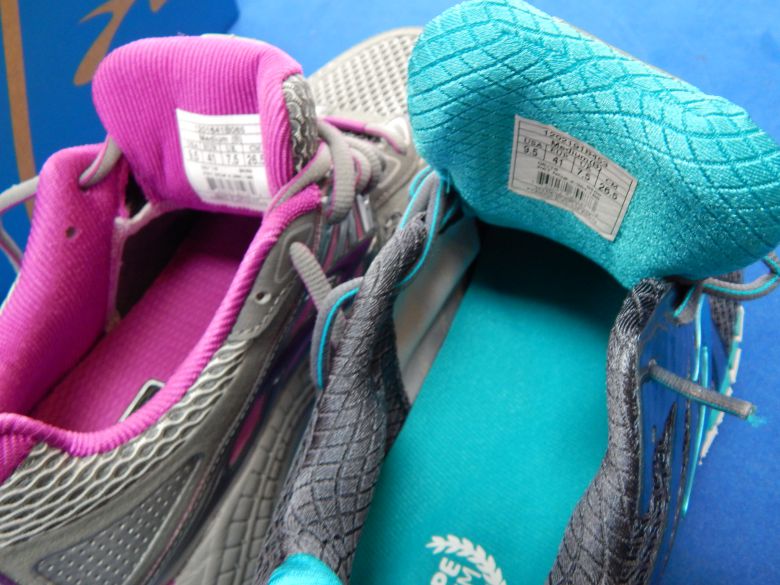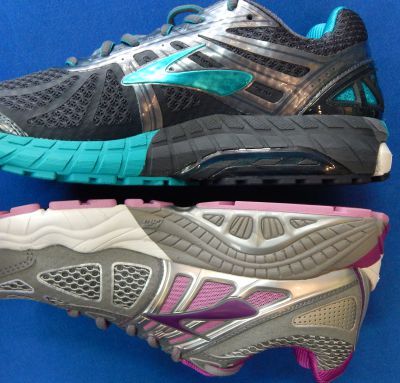Brooks Beast/Ariel 2016 Model Review
Posted by Adam Stuhlfaut, Director of Running on
The Brooks Beast and Ariel (same shoe Beast is men’s; Ariel is women’s) just received their once every other year update. These models are perennial best sellers, year-after-year, in the Motion Control category of athletic running and walking shoes. Updates to such consistent models are always a little scary, but the product people at Brooks do their best to keep the changes to the Beast/Ariel as minimal as possible. They made four changes to note and we describe the changes:
-
Removed the stitched-in tongue: The 2014 version of the Beast/Ariel had the tongue stitched-in to the sides of the inside of the shoe. They did this to increase the snugness of the fit in the arch and midsection of the shoe. The problem was that our customers sometimes had a hard time getting into the shoe. The new 2016 does not have this stitching. Ease of entry into the 2016 model is welcome relief.

2014 Ariel on Left and NEW 2016 Ariel on Right
-
Removed the stability web: Stability webs are a piece of plastic inserted into the middle part of the sole of a athletic shoe to give the shoe more torsional rigidity, but for most shoes it was just a band-aid to fix problems caused by sculpting foam out of the middle part for both aesthetic and weight saving reasons. While stabilizing the shoe some, other problems occurs. For example, stability webs can break when stepping on rocks.

NEW 2016 Ariel on Left and 2014 Model in Right
In modern shoes, it is an unnecessary part, only there purely for aesthetic reasons i.e. it’s the way running shoes are supposed to look according to some. In the 2016 Beast/Ariel, Brooks product designers removed it and made the bottom of the shoe full-ground contact. Full-ground contact shoes are just as stable, if not more, than their counterparts with sculpted midsoles and stability webs.
-
Lowered the height of the plastic in the medial post: The medial post is functional piece built into the sole of the medial or inner side of the shoe. Its main function is the prevent inward overpronation. It is typically made of a foam wedge, denser than the remainder of the sole, a dense plastic wedge or some combination of the two. Brooks traditionally builds the Beast/Ariel with one the largest and most strong medial posts of any shoe on the market. It includes two densities of foam, plus plastic in a huge wedge that runs from the heel to the forward part of the arch area.

NEW 2016 Ariel above (medial post in navy blue), 2014 Ariel on bottom (medial post in grey/silver)
In the 2016 Beast/Ariel, Brooks designers have decreased the size of the plastic part of the medial post.On the positive side, it may make the correction less harsh and make the Beast/Ariel open to more customers.On the down side, a lot of customers need a severe amount of correction and scaling back the correction could mean problems for those customers.
-
Changed to an external heel counter: A heel counter is a piece of plastic typically built into the heel cup of athletic and non-athletic shoes. The goal of the heel counter is to stabilize the calcaneus (heel bone) and help the foot track better as it travels from heel to toe. The tighter it is on the heel, wearers receive more rear foot stabilization.

2014 Ariel on Left, NEW 2016 Ariel on Right
Most of the major shoe brands have experimented with placing the part on the outside of the heel cup, mostly for aesthetic reasons. It makes the shoe more technical looking. The problem is the when the heel counter is not close to the foot, the shoe manufacturer builds in a thick layer of soft foam on the inside of the heel pocket in attempt to grasp the heel.This is precisely what the Brooks designers did with the new Beast/Ariel. Over time, customer reaction will tell whether this change is a success.
